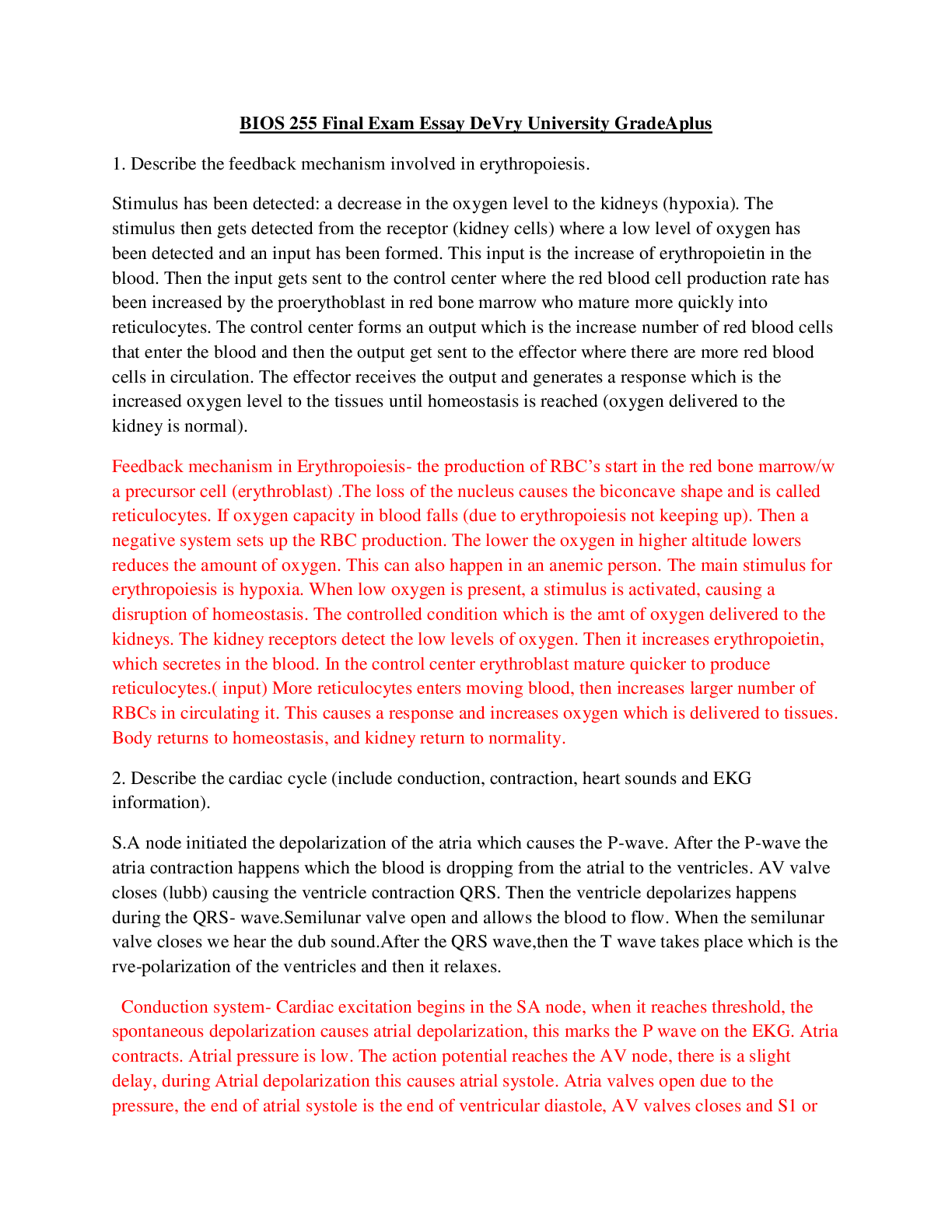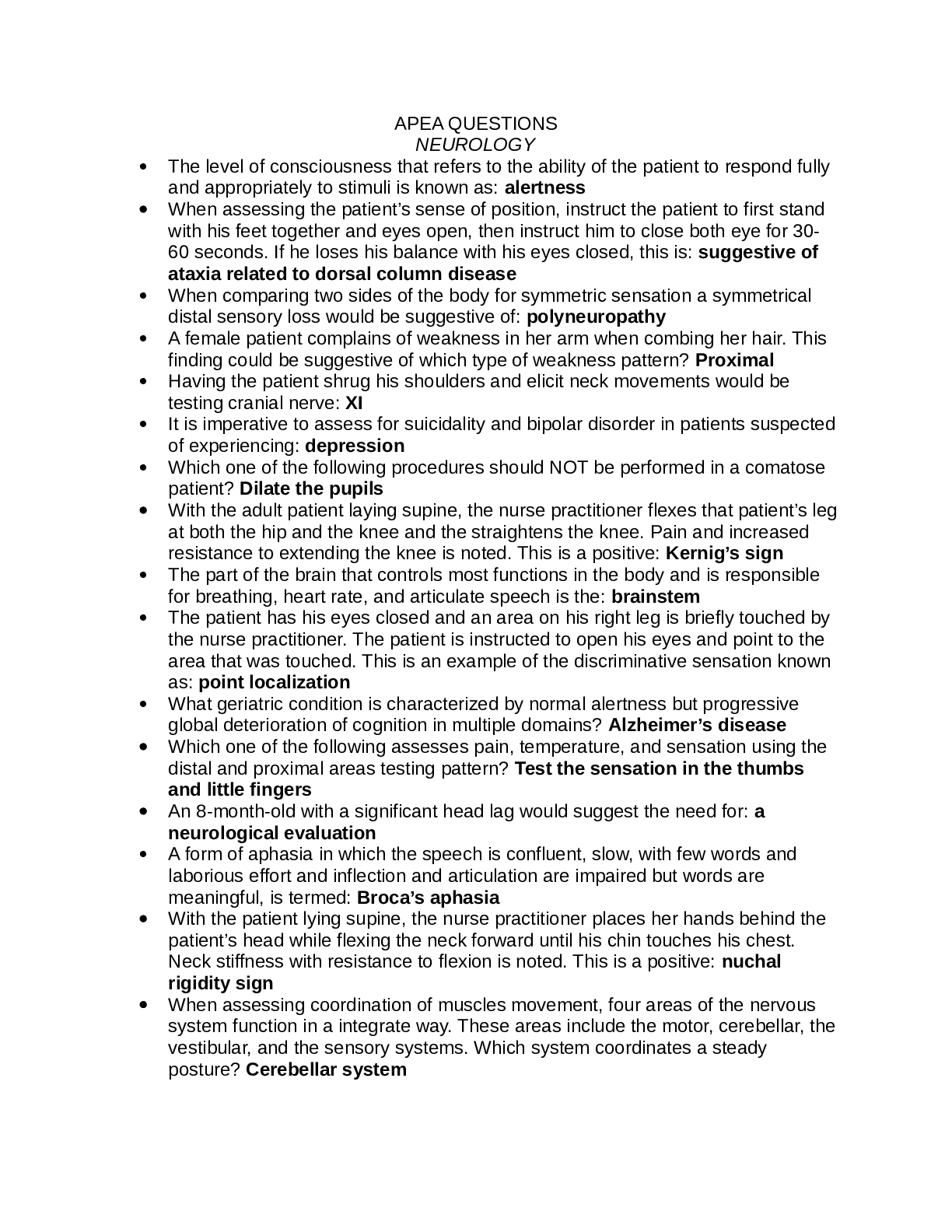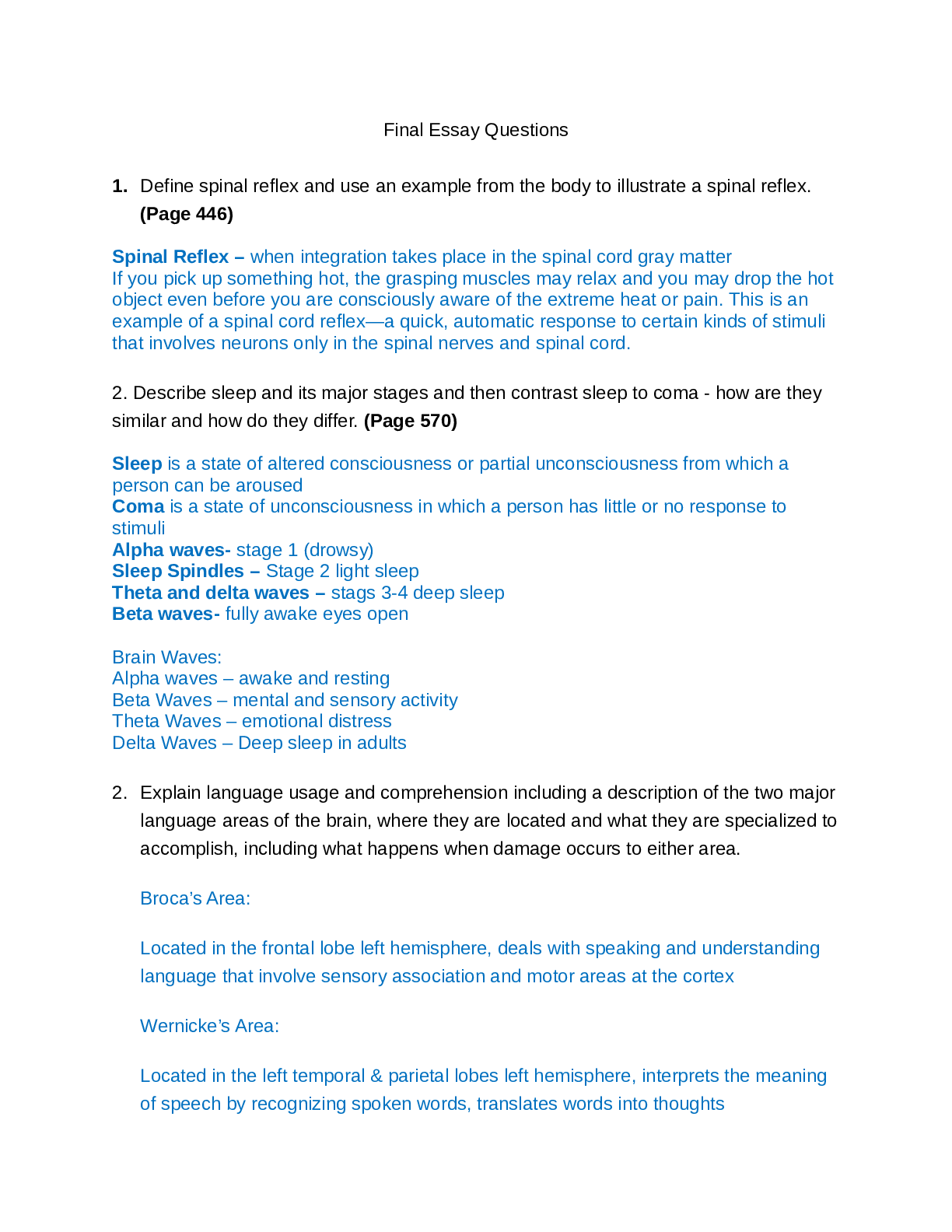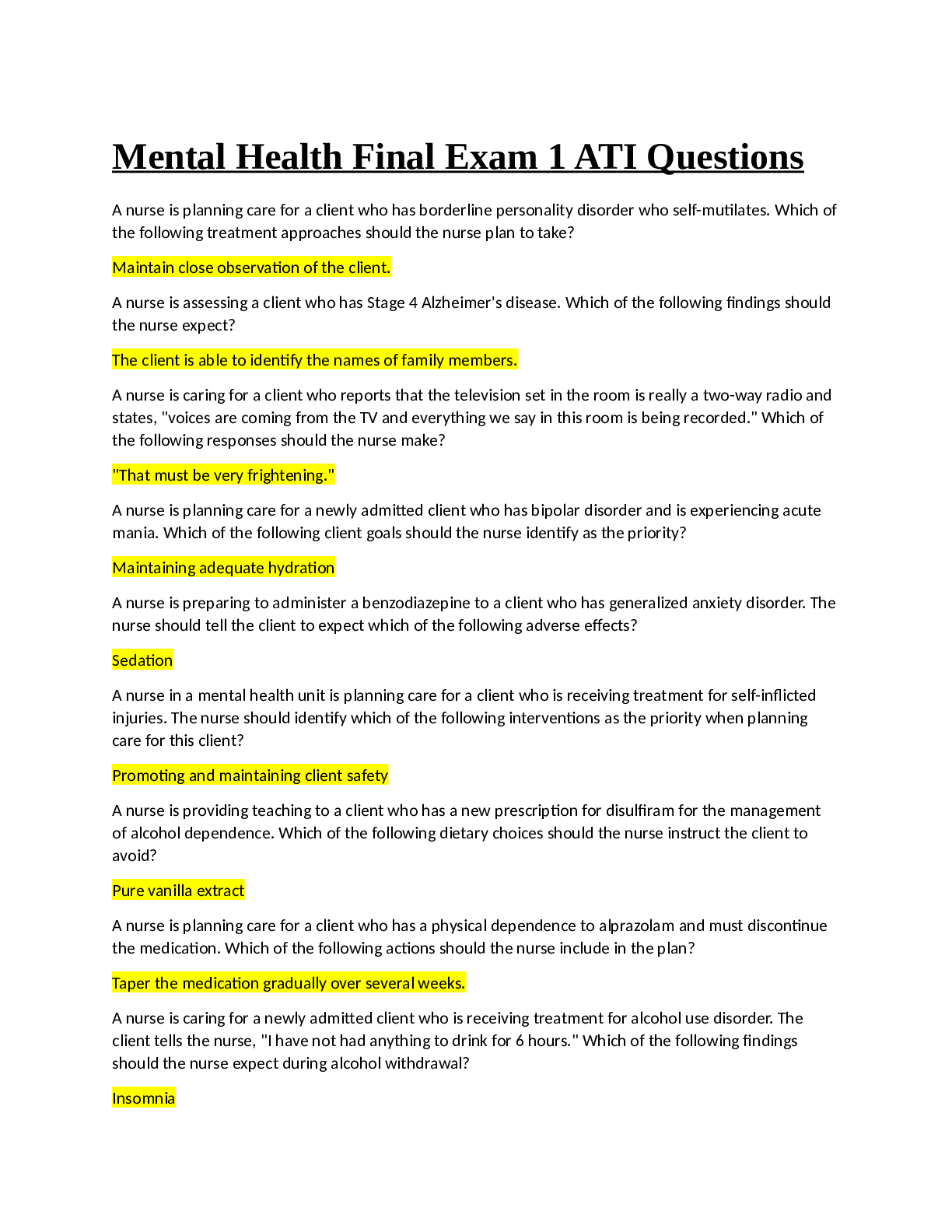BIO 252 Final Exam Essay Questions - A & P II, Latest 2020
Document Content and Description Below
1. Define spinal reflex and use an example from the body to illustrate a spinal reflex. (Page 446) Spinal Reflex – when integration takes place in the spinal cord gray matter If you pick up some... thing hot, the grasping muscles may relax and you may drop the hot object even before you are consciously aware of the extreme heat or pain. This is an example of a spinal cord reflex—a quick, automatic response to certain kinds of stimuli that involves neurons only in the spinal nerves and spinal cord. 2. Describe sleep and its major stages and then contrast sleep to coma - how are they similar and how do they differ. (Page 570) Sleep is a state of altered consciousness or partial unconsciousness from which a person can be aroused Coma is a state of unconsciousness in which a person has little or no response to stimuli Alpha waves- stage 1 (drowsy) Sleep Spindles – Stage 2 light sleep Theta and delta waves – stags 3-4 deep sleep Beta waves- fully awake eyes open Brain Waves: Alpha waves – awake and resting Beta Waves – mental and sensory activity Theta Waves – emotional distress Delta Waves – Deep sleep in adults 2. Explain language usage and comprehension including a description of the two major language areas of the brain, where they are located and what they are specialized to accomplish, including what happens when damage occurs to either area. Broca’s Area: Located in the frontal lobe left hemisphere, deals with speaking and understanding language that involve sensory association and motor areas at the cortex Wernicke’s Area: Located in the left temporal & parietal lobes left hemisphere, interprets the meaning of speech by recognizing spoken words, translates words into thoughts Damage to Broca’s: Cerebrovascular accident (CVA) means understand words but cannot speak your thoughts Damage to Wernicke’s: Can speak but cannot arrange words in a coherent fashion 3. Compare and contrast the cochlea and the vestibular apparatus, discussing their anatomical and physiological differences. The inner ear is divided into 2 categories: the cochlea and vestibular apparatus. Cochlea – snail shape boney spinal canal makes 3 turns around a boney cord and divided into 3 channels Vestibular apparatus – is the oval central portion of the boney labyrinth the membranous labyrinth in the vestibule consists of two sacs the utricle and saccule which are connected by a small duct coming from the vestibule are 3 boney semicircular canals 4. Explain the process of light reflecting off an object will pass through the eye. Include all relevant structures and indicate how the photon is transduced into an electrochemical signal in the brain. Include the major regions involved in visual transduction. Light rays reflecting distant objects are focused on the retina after they passed through the cornea, aqueous humor, the lens, and vitreous humor. As light passes through the eye they experience refraction, which is the change in direction of light rays as they transition between different materials. Once the light rays are focused on the retina, the formed image is processed by photoreceptor cells called rods and cones. These photoreceptors relay the signal to the brain by the optic nerve. 6. Explain the control of estrogen and progesterone through the endocrine system. [Show More]
Last updated: 2 years ago
Preview 1 out of 4 pages

Buy this document to get the full access instantly
Instant Download Access after purchase
Buy NowInstant download
We Accept:

Reviews( 0 )
$15.00
Can't find what you want? Try our AI powered Search
Document information
Connected school, study & course
About the document
Uploaded On
Dec 16, 2020
Number of pages
4
Written in
Additional information
This document has been written for:
Uploaded
Dec 16, 2020
Downloads
0
Views
57



.png)

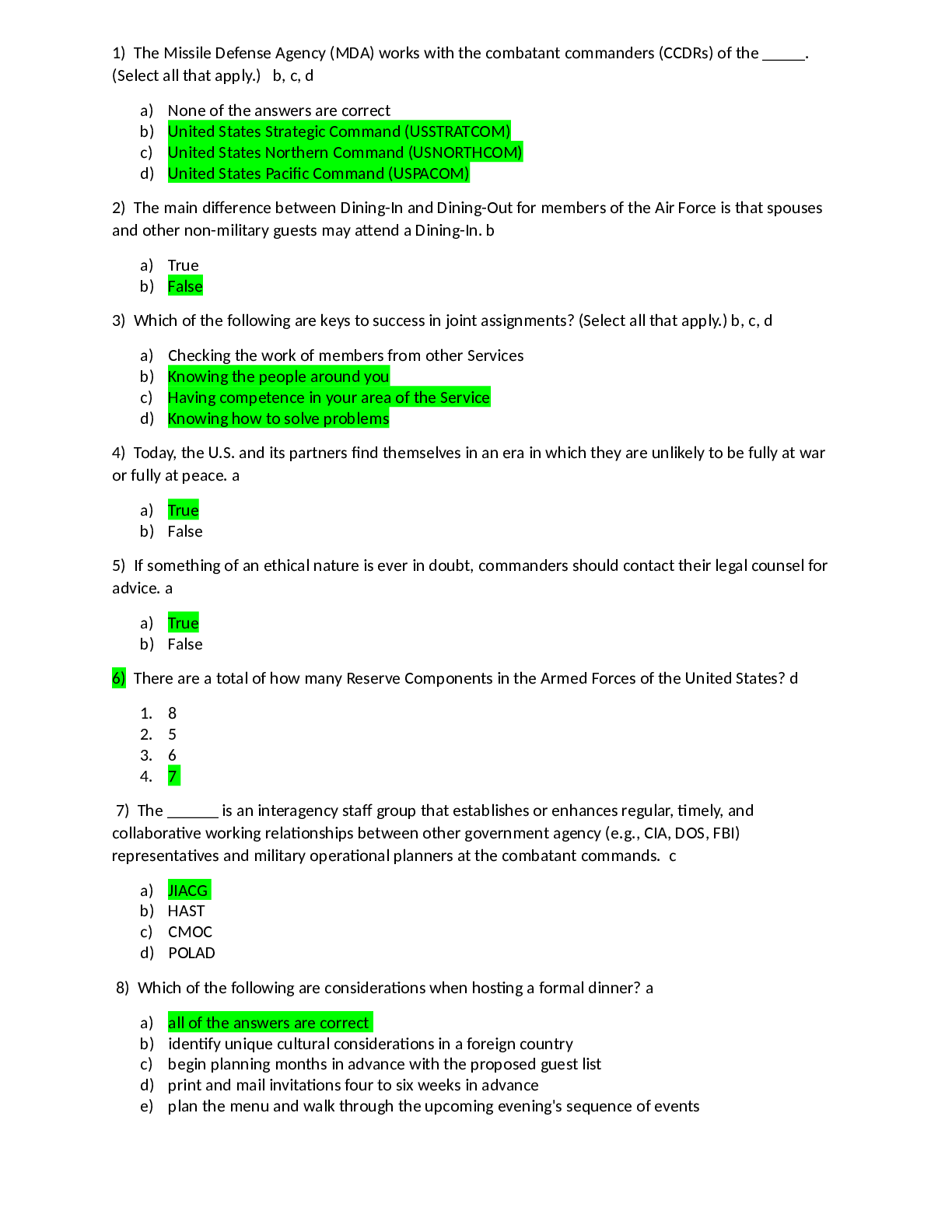
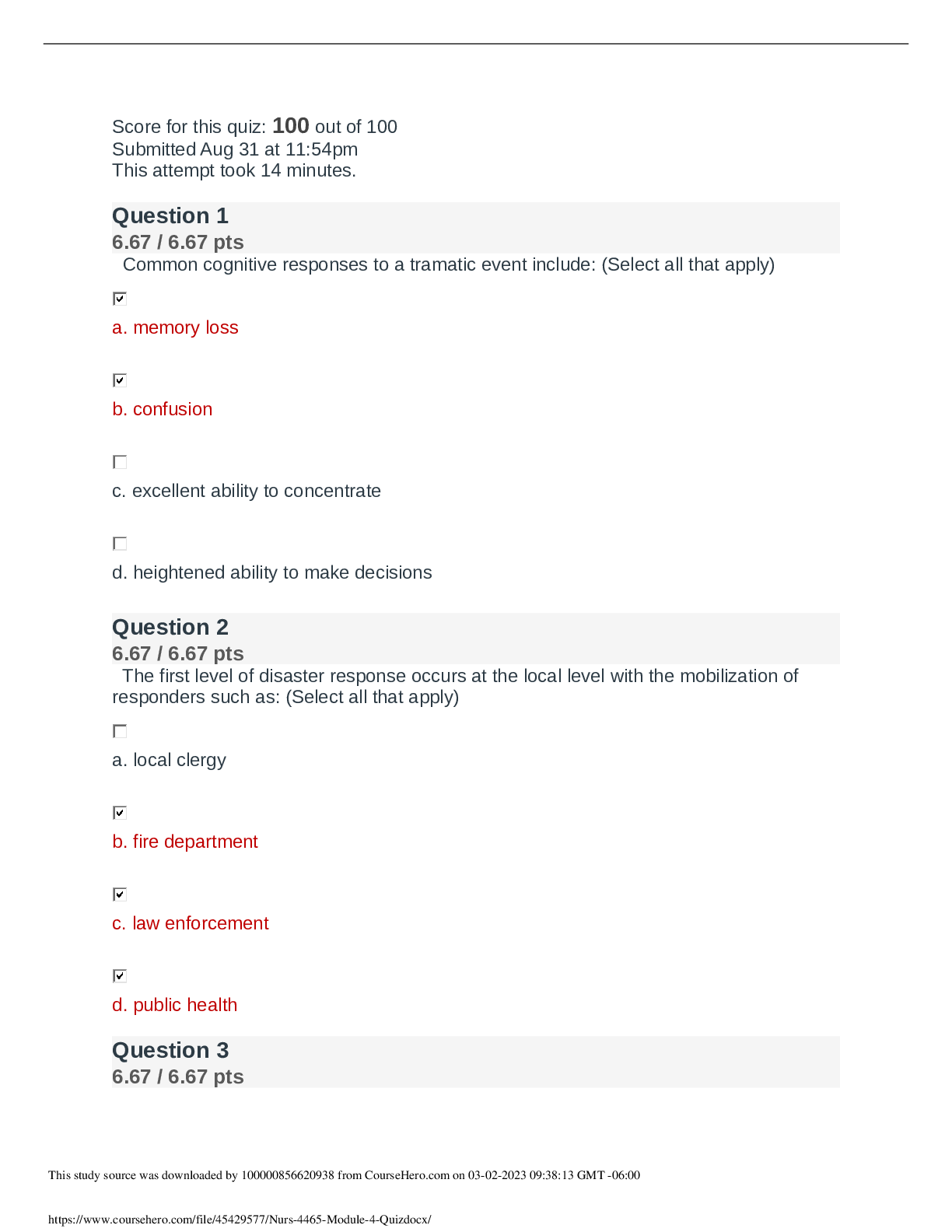
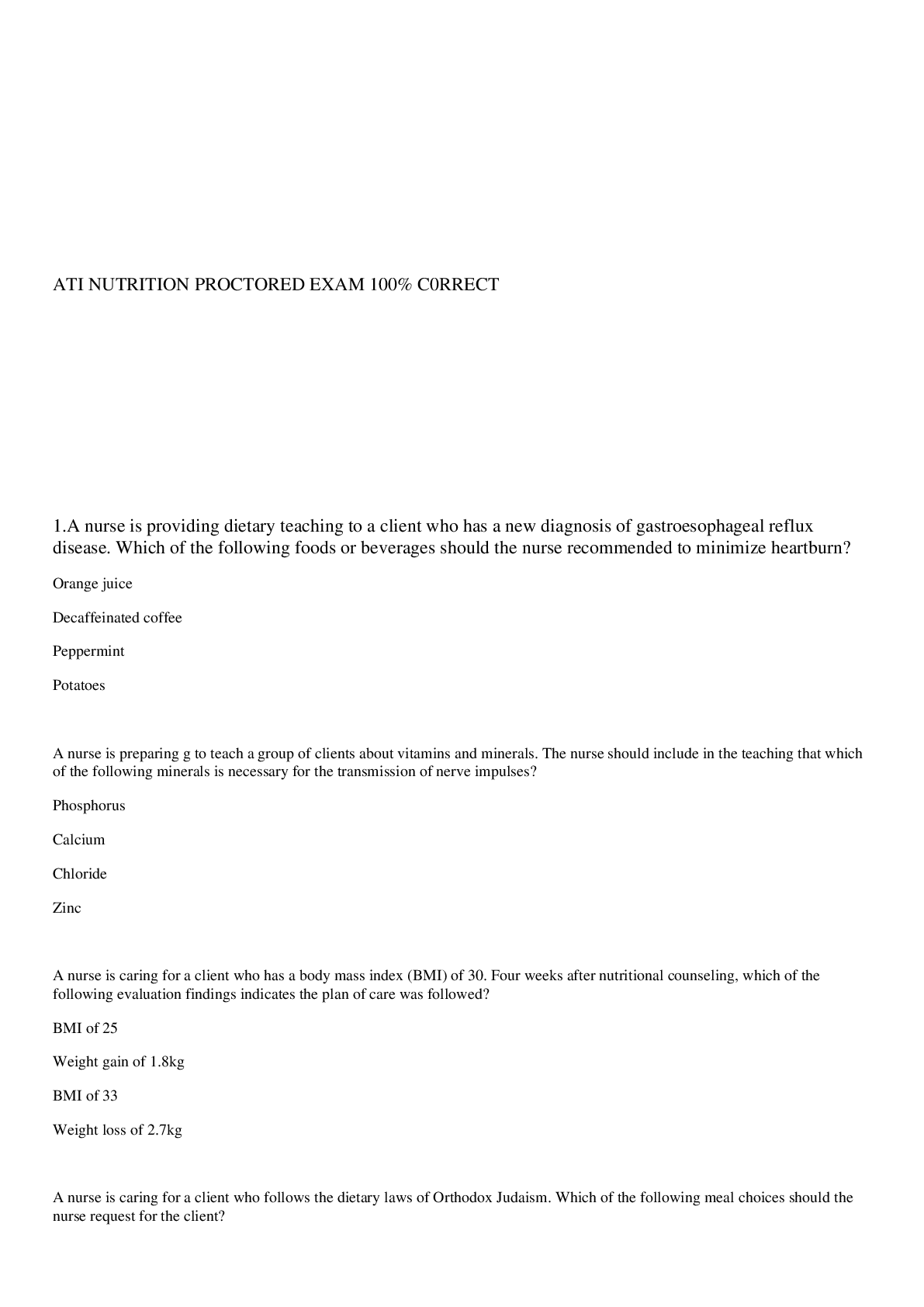
.png)
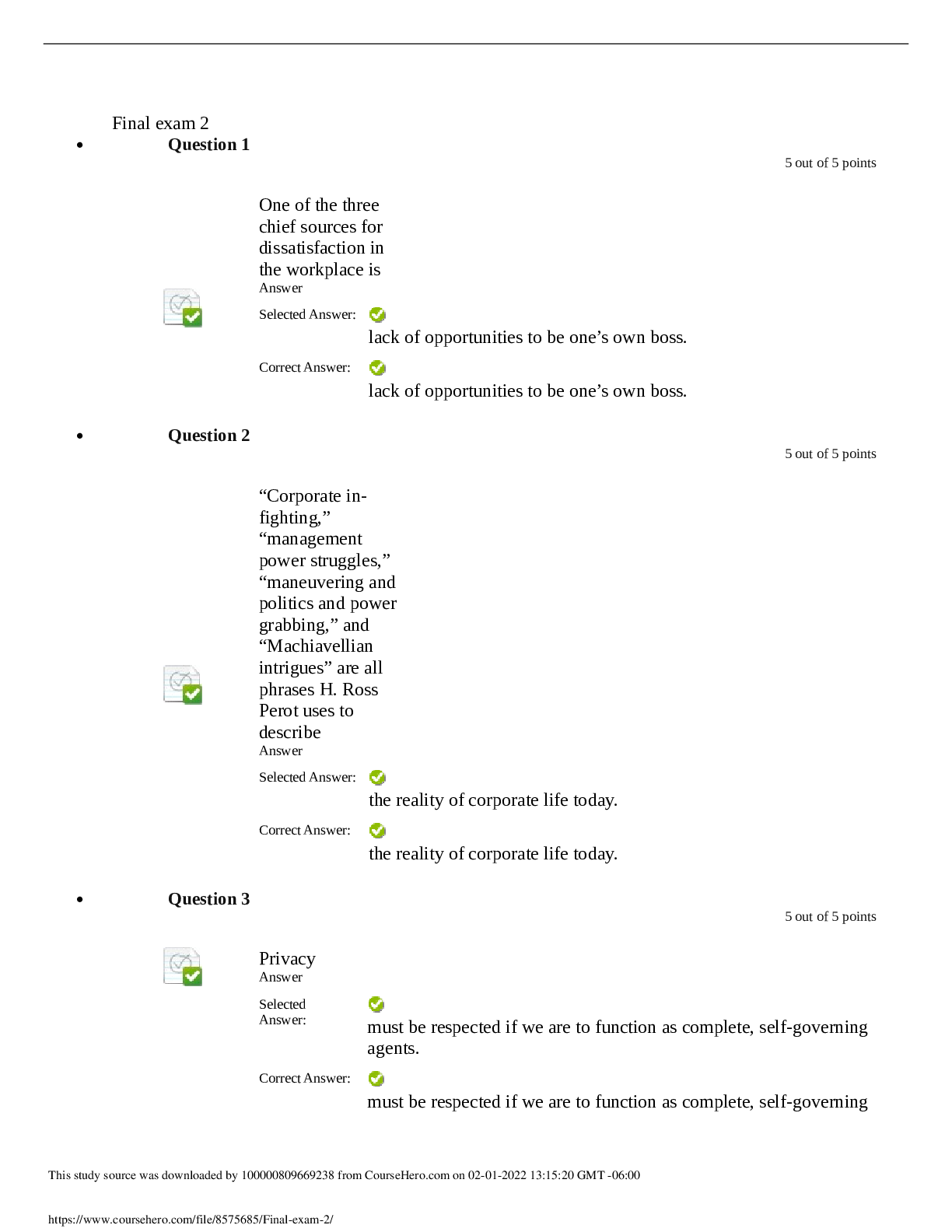
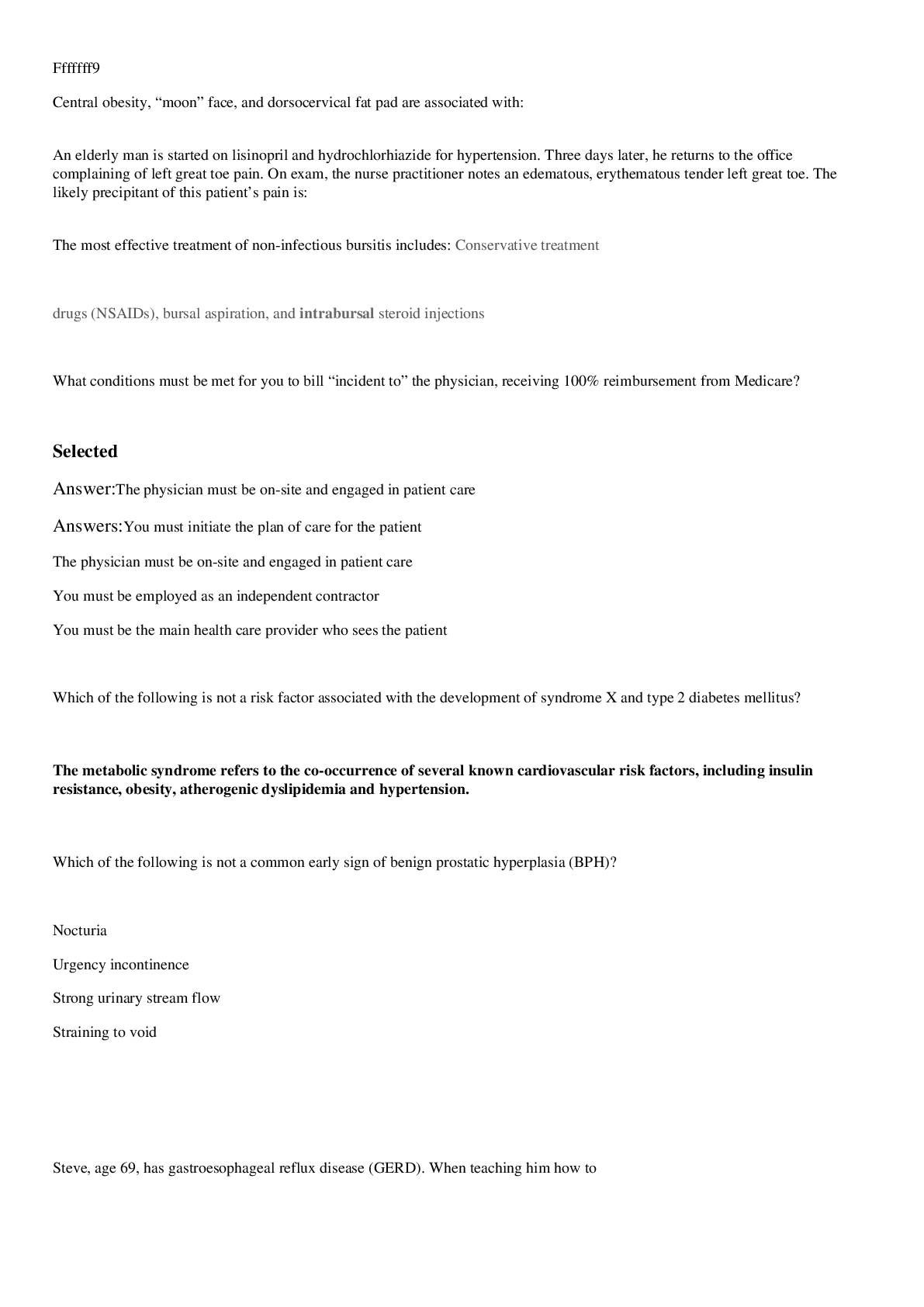
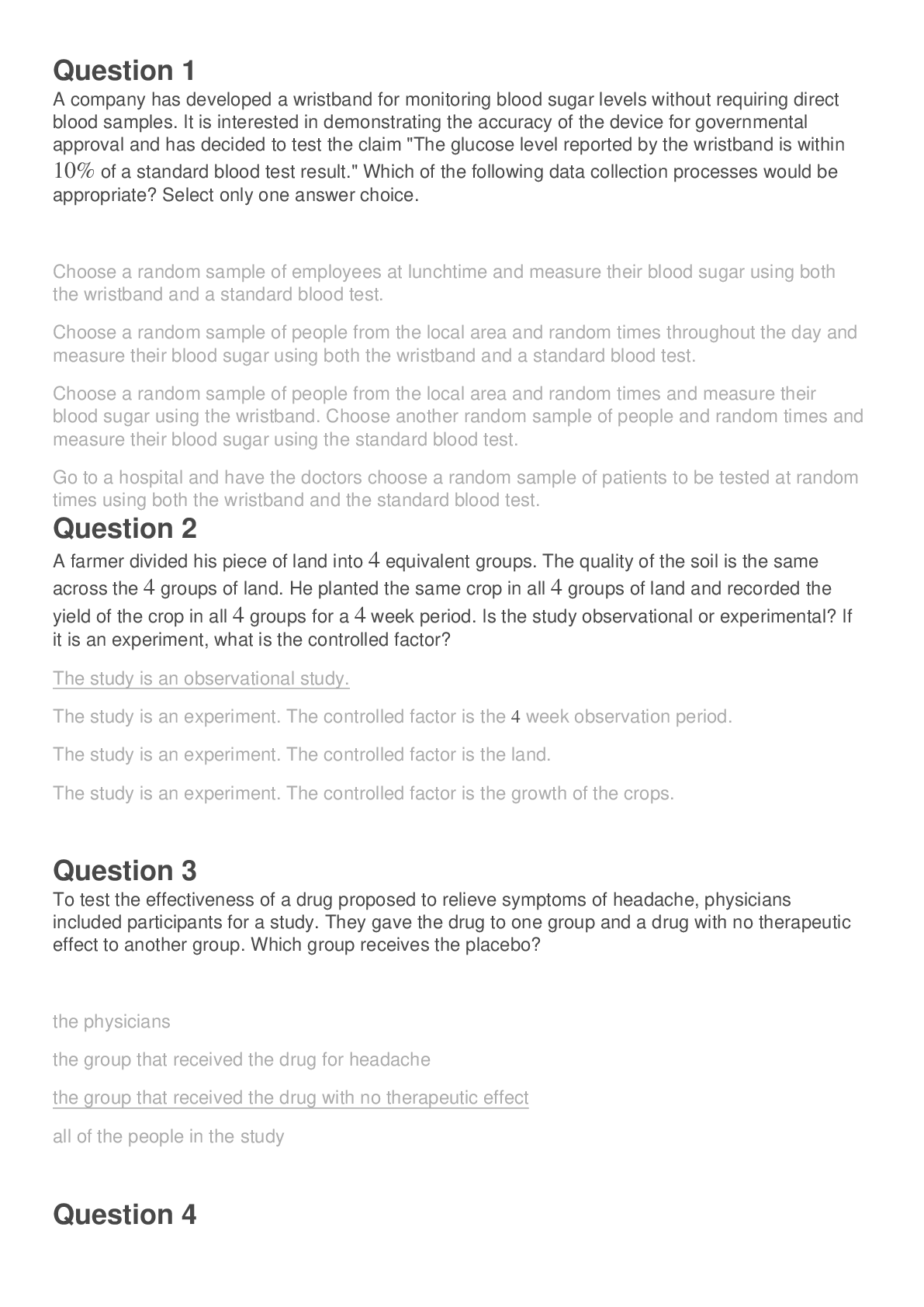
.png)

